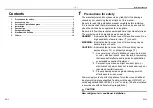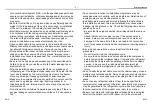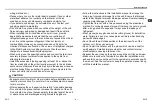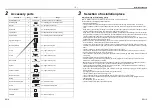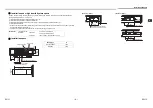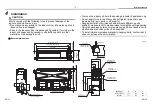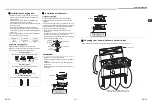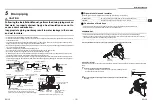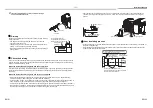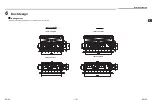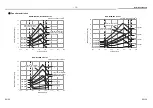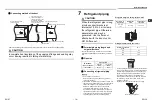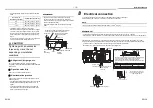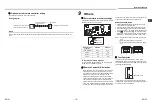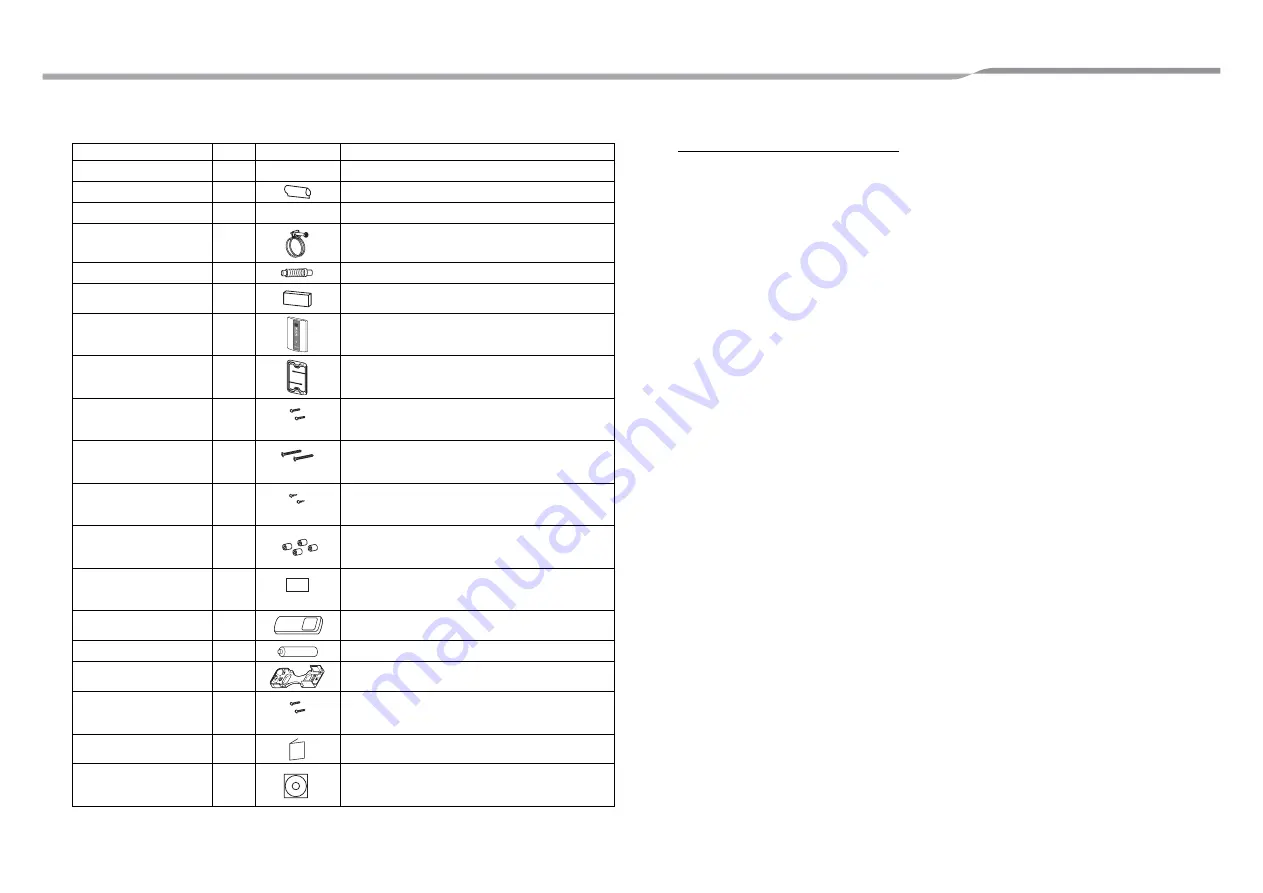
– 5 –
Installation Manual
EN-9
EN-10
2
Accessory parts
Part name
Q’ty
Shape
Usage
Installation Manual
1
This manual
(Be sure to hand over to customers)
Insulating pipe
2
For insulating pipe connecting section
Washer
8
M10 × Ø34
For hanging down the unit
Hose band
1
For connecting drain pipe
Flexible hose
1
For adjustment of drain pipe centering
Heat insulator
1
For insulating drain connecting section
Signal receiving unit
1
Mounting bracket
1
For signal receiving unit
Screw 2
M4 x 25 mm
For signal receiving unit
Screw 2
M4 x 40 mm
For signal receiving unit
Wood Screw
2
Ø3.8 x 16 mm
For signal receiving unit
Spacer
4
For signal receiving unit
Pattern template
1
95 mm x 51 mm
For signal receiving unit
Remote controller
1
Battery 2
Remote controller holder
1
For remote controller
Screw 2
Ø3.1 x 16 mm
For remote controller holder
Owner's Manual
1
CD-ROM
1
For some models only
3
Selection of installation place
Avoid installing in the following places
Select a location for the indoor unit where the cool or warm air will circulate evenly.
Avoid installation in the following kinds of locations.
• Saline area (coastal area)
• Locations with acidic or alkaline atmospheres (such as areas with hot springs, factories where chemicals or
pharmaceuticals are made and places where the exhaust air from combustion appliances will be sucked into the
unit).
Doing so may cause the heat exchanger (its aluminum fins and copper pipes) and other parts to become corroded.
• Locations with atmospheres with mist of cutting oil or other types of machine oil.
Doing so may cause the heat exchanger to become corroded, mists caused by the blockage of the heat exchanger
to be generated, the plastic parts to be damaged, the heat insulators to peel off, and other such problems to result.
• Locations where vapors from food oils are formed (such as kitchens where food oils are used).
Blocked filters may cause the air conditioner’s performance to deteriorate, condensation to form, the plastic parts to
be damaged, and other such problems to result.
• Places where iron or other metal dust is present. If iron or other metal dust adheres to or collects on the interior of
the air conditioner, it may spontaneously combust and start a fire.
• Locations near obstructions such as ventilation openings or lighting fixtures where the flow of the blown air will be
disrupted (a disruption of the air flow may cause the air conditioner’s performance to deteriorate or the unit to shut
down).
• Locations where an in-house power generator is used for the power supply.
The power line frequency and voltage may fluctuate, and the air conditioner may not work properly as a result.
• On truck cranes, ships or other moving conveyances.
• The air conditioner must not be used for special applications (such as for storing food, plants, precision instruments
or art works).
(The quality of the items stored may be degraded.)
• Locations where high frequencies are generated (by inverter equipment, in-house power generators, medical
equipment or communication equipment).
(Malfunctioning or control trouble in the air conditioner or noise may adversely affect the equipment’s operation.)
• Locations where there is anything under the unit installed that would be exposed to wet risk.
(If the drain has become blocked or when the humidity is over 80 %, condensation from the indoor unit will drip,
possibly causing damage to anything underneath.)
• In the case of the wireless type of system, rooms with the inverter type of fluorescent lighting or locations exposed
to direct sunlight.
(The signals from the wireless remote controller may not be sensed.)
• Locations where organic solvents are being used.
• The air conditioner cannot be used for liquefied carbonic acid cooling or in chemical plants.
• Location near doors or windows where the air conditioner may come into contact with high-temperature, high-
humidity outdoor air.
(Condensation may occur as a result.)
• Locations where special sprays are used frequently.
Summary of Contents for RAS-M07G3DV Series
Page 19: ...EG55760001 00 ...


